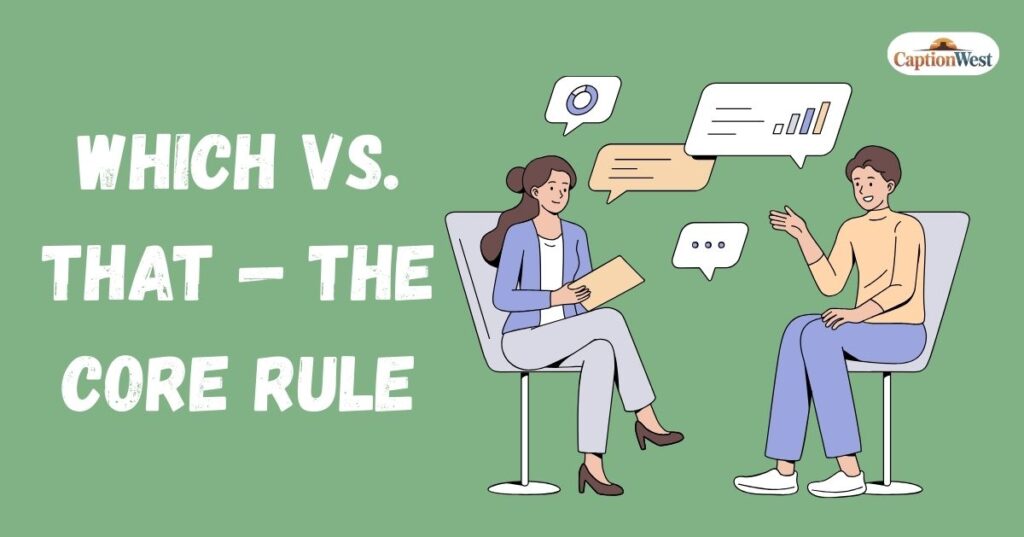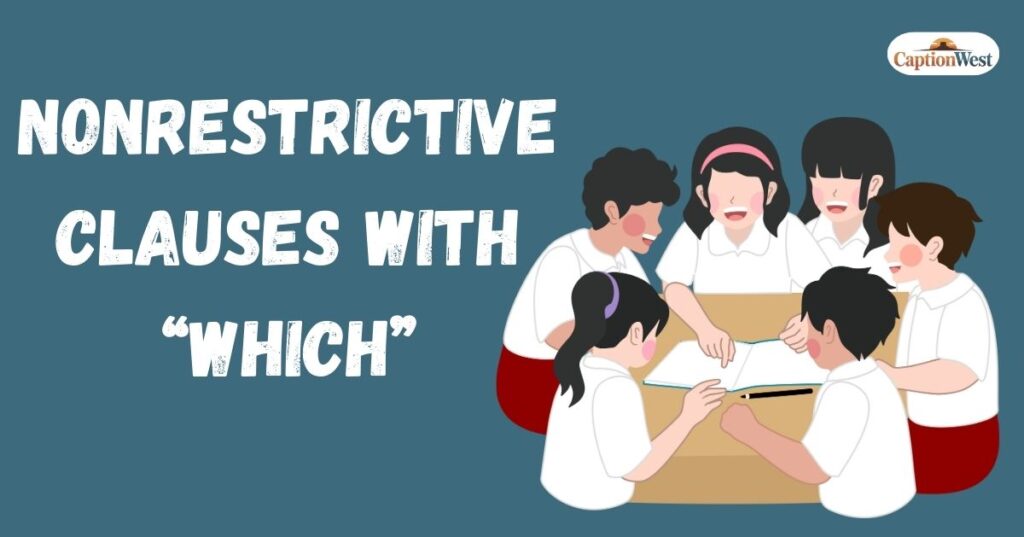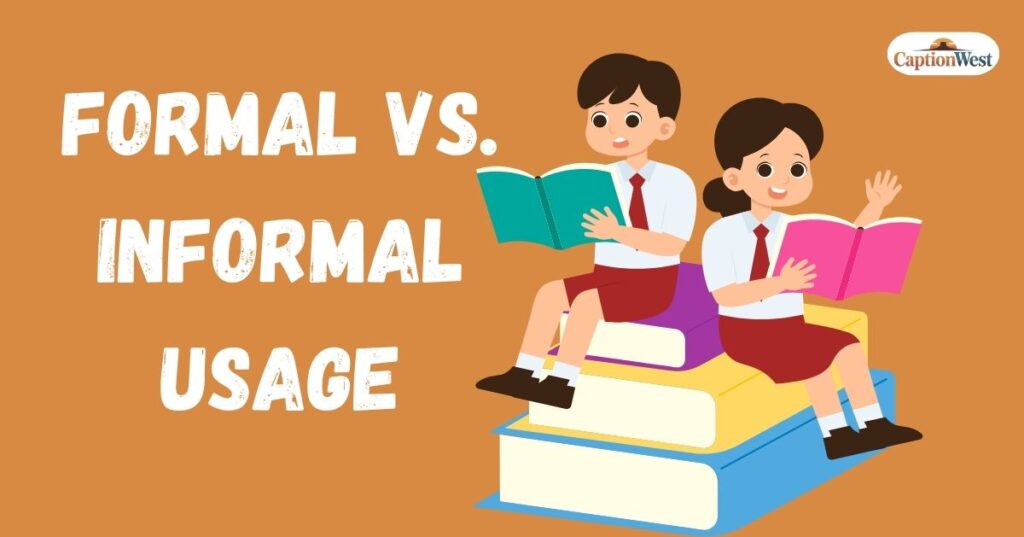English grammar can sometimes feel like a puzzle, especially when it comes to words that look similar but function differently. One of the most common confusions is the difference between which and that. Both words are used to introduce clauses, but they don’t always work the same way. To write clearly and correctly, you need to understand when to use which and when to use that.
In this guide, we’ll break down their differences, explore restrictive vs. nonrestrictive clauses, share examples, common mistakes, memory tricks, and FAQs, so you’ll never confuse them again.
Why Understanding the Difference Between Which and That Matters
At first glance, which and that might seem interchangeable. But in formal writing, choosing the right one helps:
- Improve clarity
- Avoid grammatical errors
- Make your sentences precise and professional
For instance:
- Correct (restrictive): The car that I bought yesterday is red.
- Correct (nonrestrictive): My car, which I bought yesterday, is red.
- Wrong: The car, that I bought yesterday, is red.
See how punctuation and meaning change? That’s why understanding the difference between which and that is essential.
Which vs. That — The Core Rule

The main rule is simple:
- That introduces restrictive clauses (essential information).
- Which introduces nonrestrictive clauses (extra, nonessential information).
👉 Think of it this way:
- If the clause tells you exactly which one, use that.
- If the clause just adds extra info, use which.
Restrictive Clauses with “That”
A restrictive clause (also called a defining clause) gives essential information that defines or limits the noun. Without it, the sentence would be incomplete or misleading.
Examples:
- The book that is on the table belongs to Sarah.
- Students that study regularly perform better.
- The shoes that I wore yesterday are muddy.
Here, the clause after that specifies exactly which book, which students, or which shoes. Remove the clause, and the meaning changes drastically.
🔑 Grammar tip: In restrictive clauses, commas are never used before that.
Nonrestrictive Clauses with “Which”

A nonrestrictive clause (also called a non-defining clause) provides extra information. If you remove it, the sentence still makes perfect sense.
Examples:
- My laptop, which I bought last year, still works perfectly.
- The Eiffel Tower, which is in Paris, attracts millions of visitors.
- This phone, which has a great camera, is my favorite.
Notice that each clause simply adds bonus details. The main sentence is complete without it.
🔑 Grammar tip: In nonrestrictive clauses, which is usually preceded by a comma, dash, or parentheses.
Quick Comparison Table
| Feature | That | Which |
| Clause type | Restrictive (essential) | Nonrestrictive (extra info) |
| Commas | ❌ No commas | ✅ Commas used |
| Example | The dress that she wore was stunning. | Her dress, which was red, looked stunning. |
| Usage in formal writing | Preferred for restrictive clauses | Used for additional details |
Other Uses of “That”
Besides being a relative pronoun, that has multiple roles in English grammar:
- Demonstrative pronoun: That is my bag.
- Determiner: That car is fast.
- Conjunction: He said that he was tired.
- Adverb: I didn’t know it was that hard.
This versatility is why many learners overuse that. But when contrasting which vs. that, focus on their clause function.
Other Uses of “Which”
Which is less flexible than that but still important:
- Relative pronoun: The pen, which is blue, belongs to me.
- Determiner (choice): Which color do you prefer—blue or green?
Why Writers Often Confuse Which and That
The confusion arises because:
- In British English, the rule is looser—which can sometimes be used in restrictive clauses.
- In informal English, many people use which and that interchangeably.
- Spoken language often drops that entirely: The book you gave me was amazing.
However, in formal American English, sticking to the distinction makes your writing polished and professional.
Common Mistakes with “Which” and “That”
- ❌ Using commas with that
- Wrong: The car, that is blue, is mine.
- Correct: The car that is blue is mine.
- Wrong: The car, that is blue, is mine.
- ❌ Forgetting commas with which
- Wrong: My phone which is old needs repair.
- Correct: My phone, which is old, needs repair.
- Wrong: My phone which is old needs repair.
- ❌ Overusing that unnecessarily
- Wordy: I think that she knows the answer.
- Better: I think she knows the answer.
- Wordy: I think that she knows the answer.
Memory Trick to Remember
Here’s a simple way to remember:
- That = essential → no commas
- Which = extra → commas
👉 Imagine that as a filter: it narrows down meaning.
👉 Imagine which as a bonus note: like adding extra flavor to a sentence.
Examples in Real Contexts
Sentences with That (restrictive):
- The smartphone that has the best battery life will win the competition.
- Any student that submits homework late will lose marks.
Sentences with Which (nonrestrictive):
- The new museum, which opened last year, has already welcomed thousands of visitors.
- Her ring, which was a family heirloom, sparkled under the light.
Formal vs. Informal Usage

- Formal (American English):
- Restrictive → that
- Nonrestrictive → which
- Restrictive → that
- British English / Informal:
- Which is sometimes used in restrictive clauses, though less preferred in academic writing.
Frequently Asked Questions (FAQs)
1. What is the main difference between which and that?
- That introduces restrictive (essential) clauses, while which introduces nonrestrictive (extra) clauses.
2. Can you use which instead of that?
In formal American English, no. In British English or casual writing, sometimes yes, but clarity may suffer.
3. Do you always need a comma before which?
Yes, when which introduces a nonrestrictive clause.
4. Do you ever need a comma before that?
No, never. That does not follow commas in standard grammar.
5. Can that be omitted?
Yes. Example: The book (that) I borrowed is amazing. In informal speech, that is often dropped.
Read Must : Difference Between Shall and Will: A Complete Guide
Final Thoughts
The difference between which and that may seem small, but it has a big impact on clarity.
- Use that for restrictive, essential clauses.
- Use which for nonrestrictive, additional clauses (with commas).
Mastering this rule not only improves your grammar but also makes your writing sharper, more professional, and easier to understand. Whether you’re writing an academic essay, a business report, or just improving everyday English, knowing when to use which vs. that will always set you apart.

